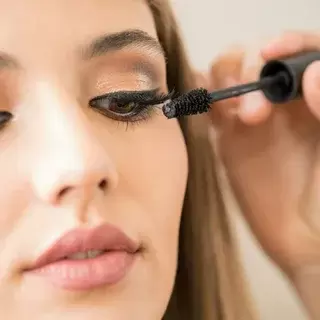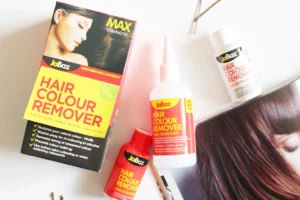Mascara dates back thousands of years to ancient cultures that applied pigments and extracts to their eyelashes.
Egyptians notably used crushed minerals and plant substances like kohl to line their eyes as early as 4000 BC.
This practice helped protect lash lines from infections while also contributing to their famous cat eye look.
In Victorian England during the 1850s 60s, mascara flourished based on the coveted doe eyed, innocent femme fatale aesthetic.
Coal dust and lampblack were commonly used to darken and thicken lashes. As coal dust caused eye issues, manufacturers transitioned to hair dyes and vegetable dyes.
The 1900s saw mascara formulas significantly improve. Early mascaras contained mostly petroleum jelly and keratin along with pigments like calcite and mica.
They helped condition lashes while portraying a richer, longer look. During World War 2, mascara was mass marketed in tube packaging as increasing numbers of women entered the workforce.
A mascara revolution occurred in the 1930s when companies like Maybelline started including petroleum and paraffin waxes.
This allowed mascara to adhere to lashes better without smudging. In later decades, polymers and latex particles became staple waterproofing agents.
Today, mascaras integrate innovative emollients, curlicues, film formers and more advanced technologies.
The Purpose of mascara
Mascara fulfills the simple yet highly impactful role of enhancing natural eyelashes. It achieves this through two key effects: darkening and defining.
Dark pigments in mascara formulas help lashes stand out more against the surrounding skin and eyelids. Defining relates to making lashes appear fuller, thicker and longer.
A properly implemented mascara creates the optical illusion of lengthened, lifted lashes which in flip makes eyes appear greater prominent and wide awake.
It frames peepers beautifully. All of this is done with very little effort compared to lash extensions or other permanent lash services.
Mascara truly is one of the most versatile and budget friendly makeup items in any collection.
Types of mascara
Regular Classic Mascara
This is mascara in its purest, basic form. It delivers subtle yet buildable darkening and separation between lashes using lightweight oils, waxes and shades of black or brown pigments.
Classic mascaras are best suited for day wear or those wanting a natural look. Some popular classic mascaras are Maybelline Great Lash Pink and Thrive Cosmetics Liquid Lash Extensions.
Volumizing Mascara
Volumizing mascaras put volume front and center through thickening polymers adhering from root to tip.
They create a much fuller lash appearance in just a coat or two without clumping. Bonus volumizers contain keratin amino acids to nourish lashes too.
Favorites include Essence Lash Princess False Lash Effect, Covergirl Lash Blast Volume, and Benefit They’re Real! Magnet.
Lengthening Mascara
These formulas contain slim precise bristle brushes to target even tiny flashes and coat them evenly from root to tip for an elongated look.
Lengthening mascaras like L’Oréal Paris Voluminous Lash Paradise and MAC Upward Lash work wonders for short lashes.
Waterproof Mascara
As the name suggests, waterproof mascaras will not budge or smudge for up to 16 hours through crying, rain, pool time and sweating.
They contain film forming polymers allowing them to better withstand liquid exposure.
Waterproof mascaras tend to be more difficult to remove fully and may irritate sensitive eyes.
Top rated ones are Maybelline The Falsies Volume Lift Waterproof, Benefit They’re Real. Lengthening & Volumizing Waterproof, and Covergirl Lash blast Volume Waterproof.
Water Resistant Mascara
This category promises 8 12 hours of smudge proof wear in humid or wet conditions but is easier to take off versus waterproof types.
Water resistant mascaras use similar waterproofing agents as waterproof ones in lower amounts.
Estee Lauder Sumptuous Extreme Lash Multiplying Volume Lifting Mascara and L’Oreal Paris Voluminous Original Mascara are excellent water resistant options.
Tubing Mascara
Applying tubing mascara results in micro tubular structures wrapping around each lash like a thin sleeve.
This allows it to slip off lashes whole during removal, preventing any smudging throughout the day.
Popular tubing mascaras are Blinc Tubing Mascara, Thrive Cosmetics Liquid Lash Extensions, and Rare Beauty Perfect Strokes Universal Volumizing Mascara.
Natural Defined Mascara
More minimal formulas with conditioning ingredients serve those wanting natural lashes, while defined mascaras pack on bold drama.
An example is Covergirl Exhibitionist Mascara for natural days versus MAC False Lashes Max for evening impact.
Application Techniques of mascara
Proper application takes mascara a long way in achieving its defining potential. Here are key application tips:
- Ensure clean, residue free lashes before application. Gently brush off any old mascara remains.
- Curl lashes beforehand to lift them and open eyes fully. Hold the curler at base and squeeze firmly for 8-10 seconds.
- Wiggle brush at lash roots creating a clear base layer before extending upwards in a slightly outwards motion.
- Apply 2 3 coats for upper lashes, waiting 30 seconds in between as mascara dries.
- Brush lower lashes gently from root while holding wand perpendicular for precision application.
- Comb through lashes with a clean spoolie brush after final coat to remove clumps.
- For a lengthened lash look, apply a very small amount of water resistant formula to outer tips.
- Set freshly applied mascara using translucent powder if oily lids or eyelids cause smudging issues.
- Remove mascara fully each night using oil based or micellar water cleansers for best lash health over time.
Mascara is a makeup mainstay cherished for its ability to frame eyes gorgeously through visibly fuller, longer eyelashes.
Understanding the variety of mascara formulations available along with proper application techniques empowers anyone to choose the right option for their unique lash type and desired look whether natural enhancement or dramatic glam.
With high quality mascara and responsible use, lashes stay conditioned to be highlighted beautifully day after day.
Frequently Asked Question (FAQs)
Q: What is the use of mascara makeup?
A: Application to the eyelashes to make them look darker and longer and to make the whites of the eyes look brighter by contrast.
Q: Why is mascara useful?
A: To add thickness, length, and bold color to the eyelashes.
Q: Can I wear mascara everyday?
A: Those who overuse it run the risk of ending up with falling or thinning eyelashes.
Q: What are the disadvantages of mascara?
A: Constant use of mascara can cause inflammation and infection and cause you to lose your eyelashes.
Q: Is it safe to use mascara?
A: Mainstream mascaras can have things like aluminum powder, mercury compounds and even formaldehyde.
Conclusion of mascara:
In this comprehensive guide, we explored the history of mascara and how it has evolved over centuries into the popular eye defining product it is today.
Different types were outlined including regular, volumizing, lengthening, waterproof and more options.
Proper application techniques were reviewed to ensure lashes are fully coated without clumps.
Common questions about mascara were addressed such as preventing smudges and removing waterproof formulas.
While mascara comes in various formulations, its core function remains empowering anyone to achieve strikingly elongated eyelashes with just a simple swipe.
Hopefully this in depth look provided useful insights into harnessing the transformative power of mascara makeup.













